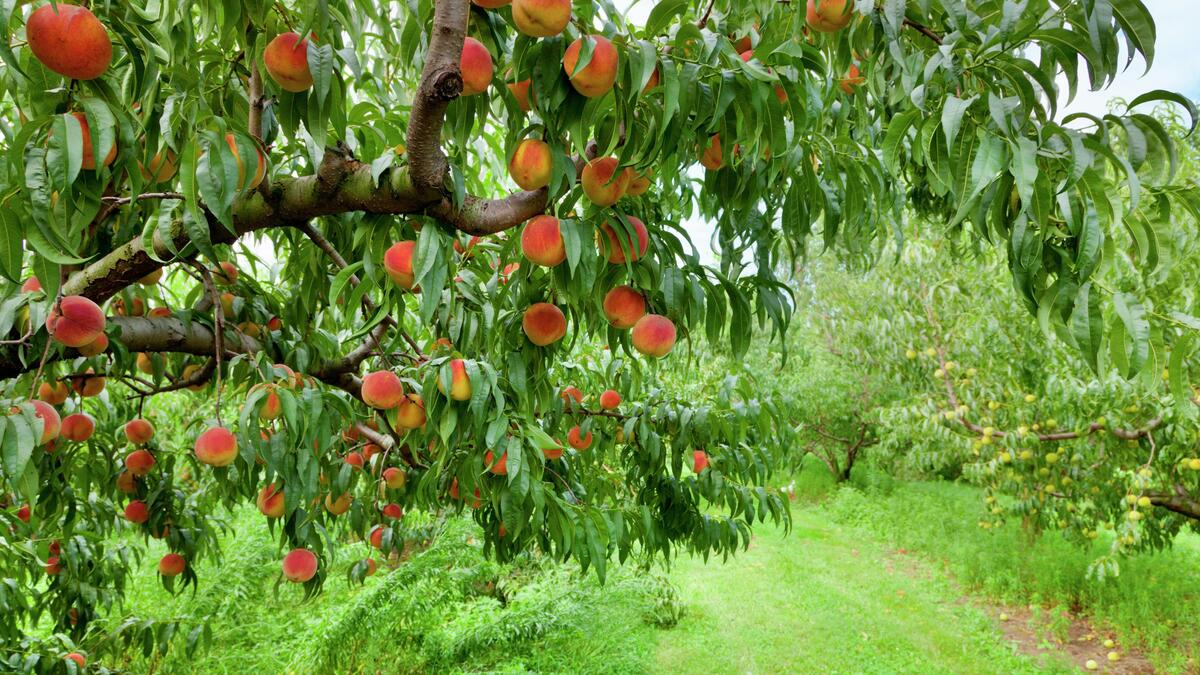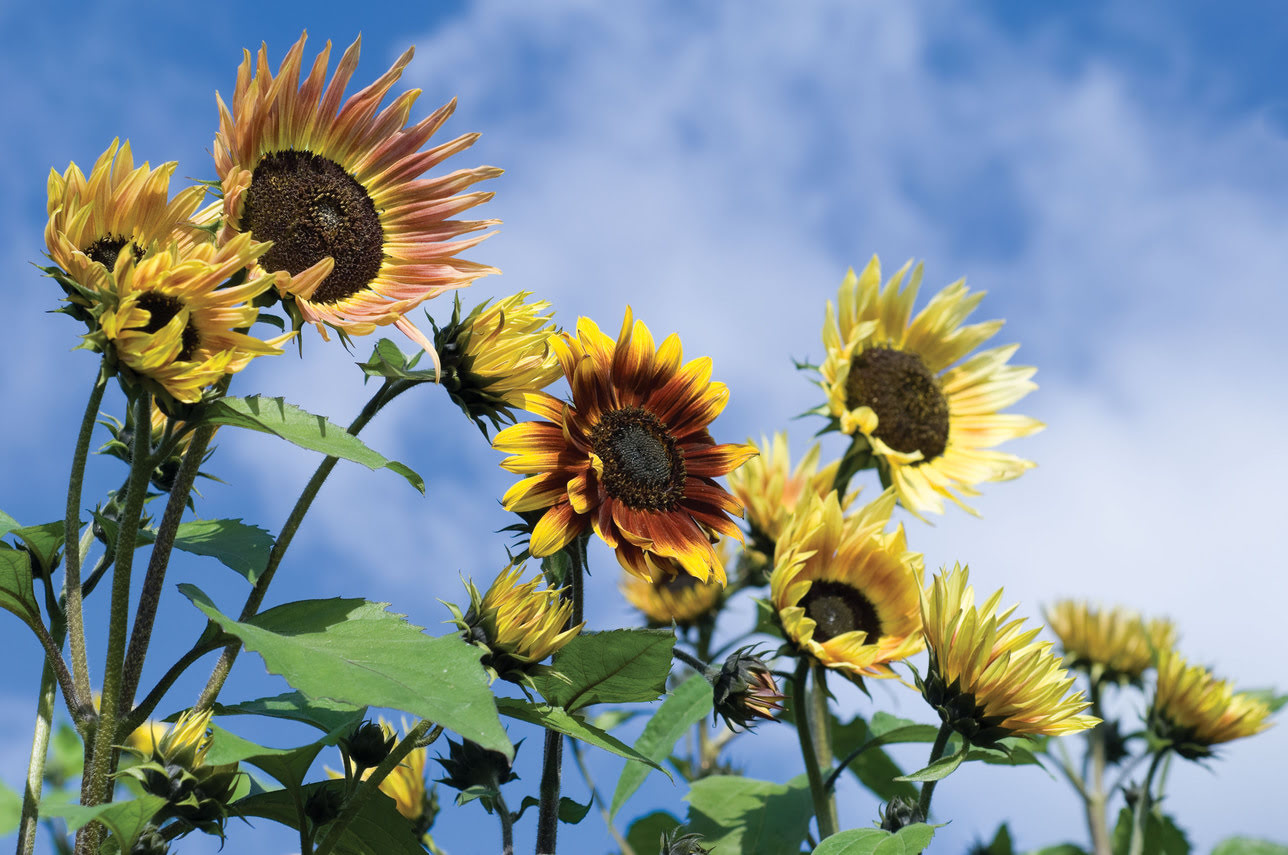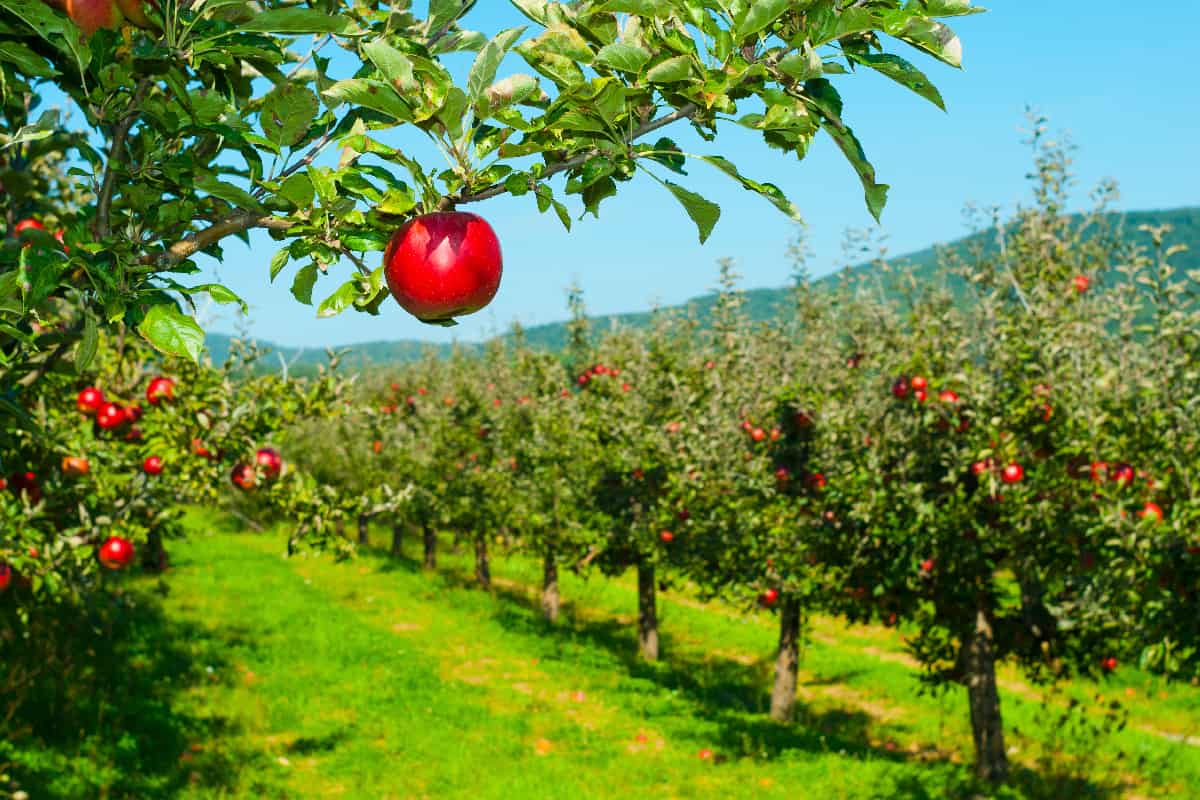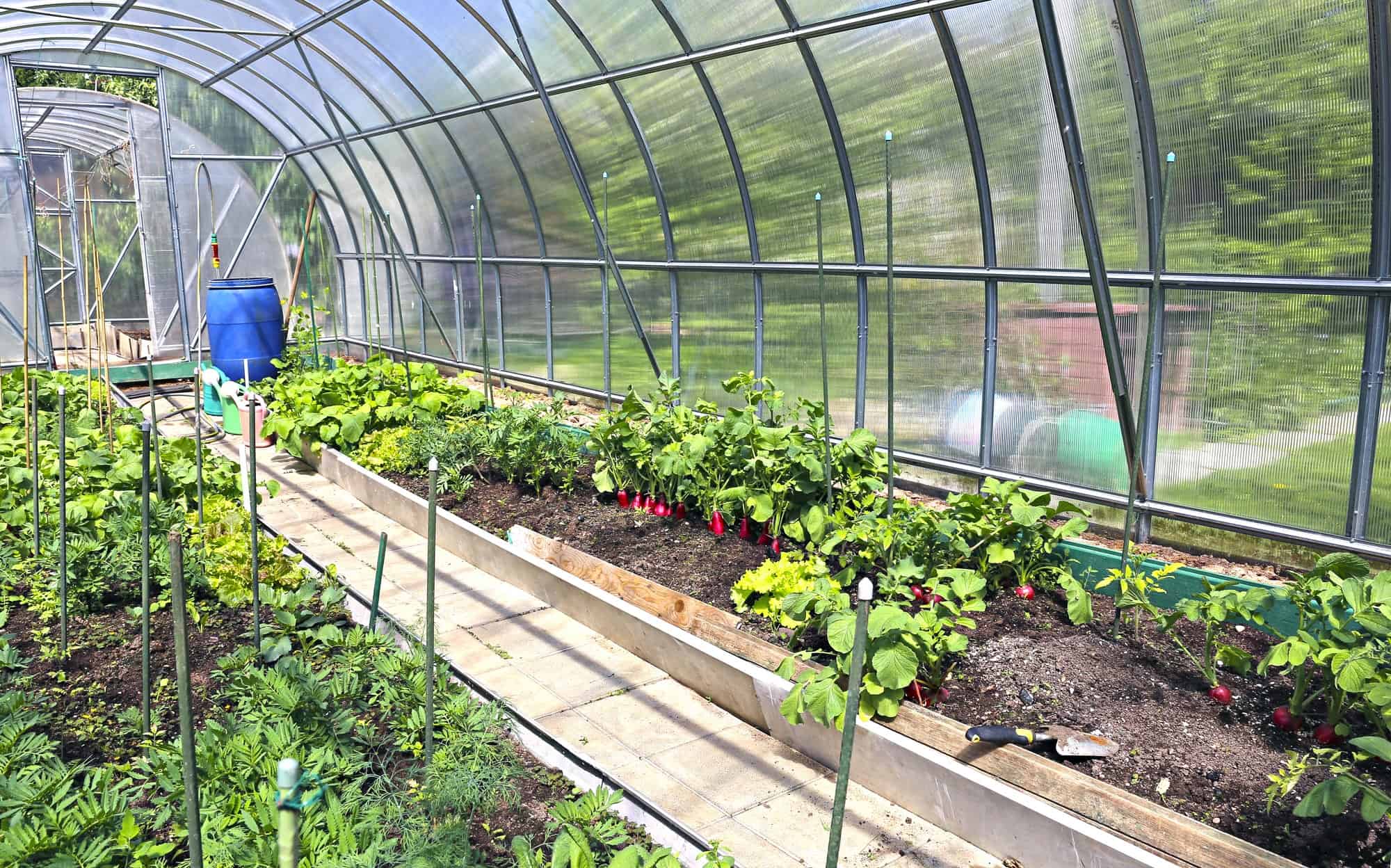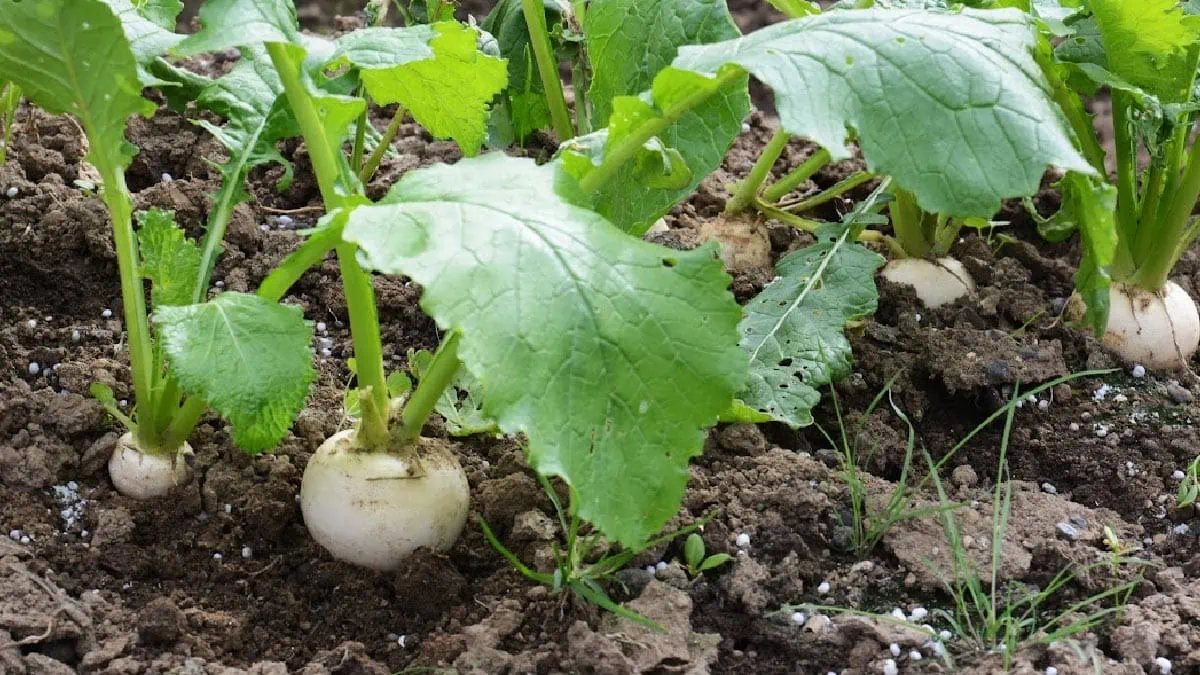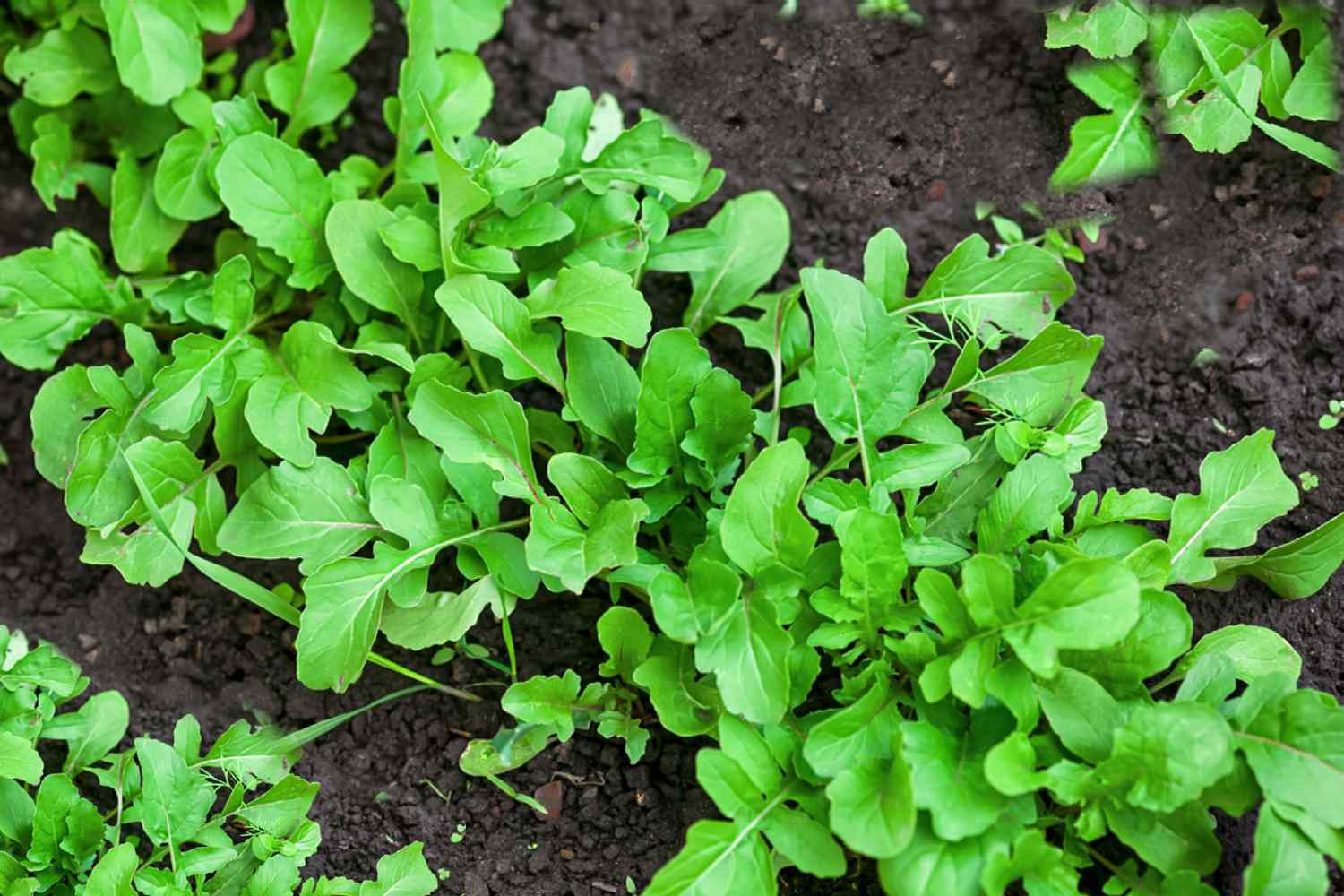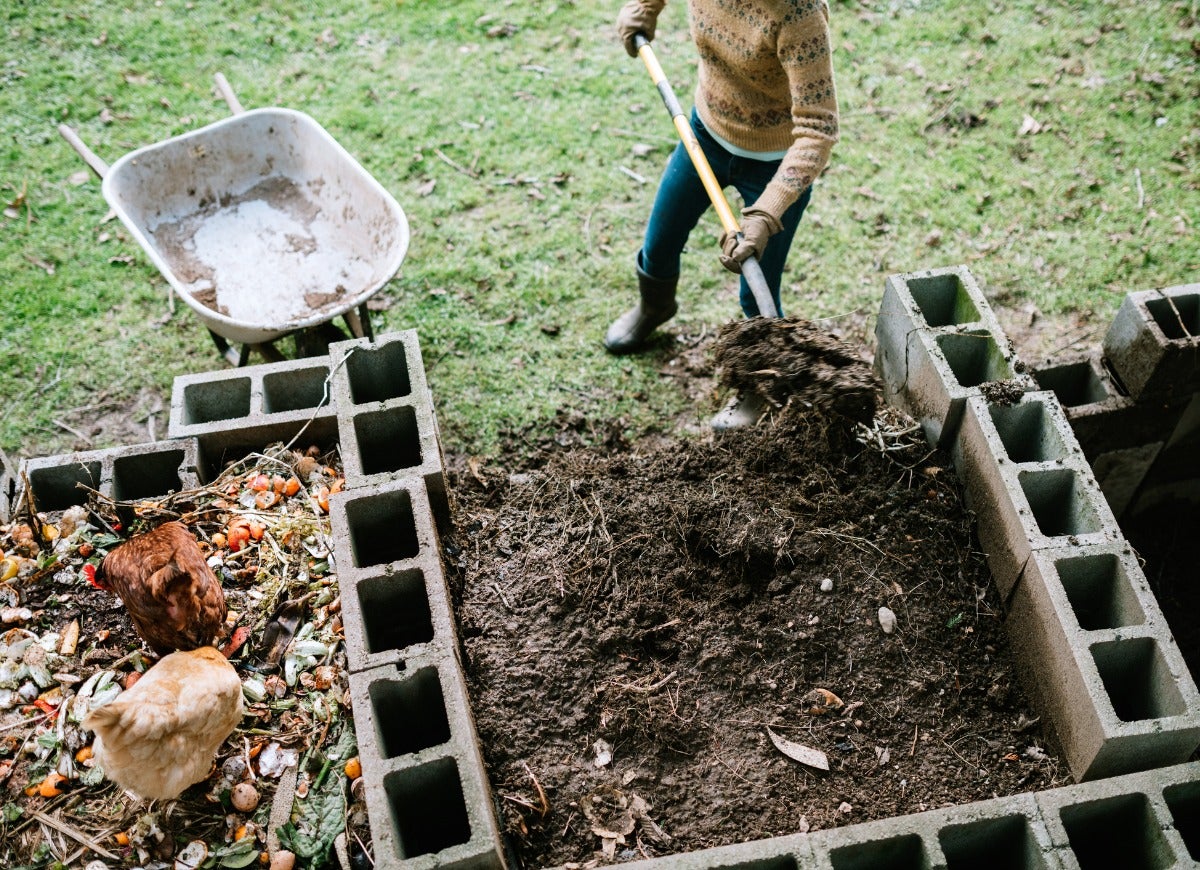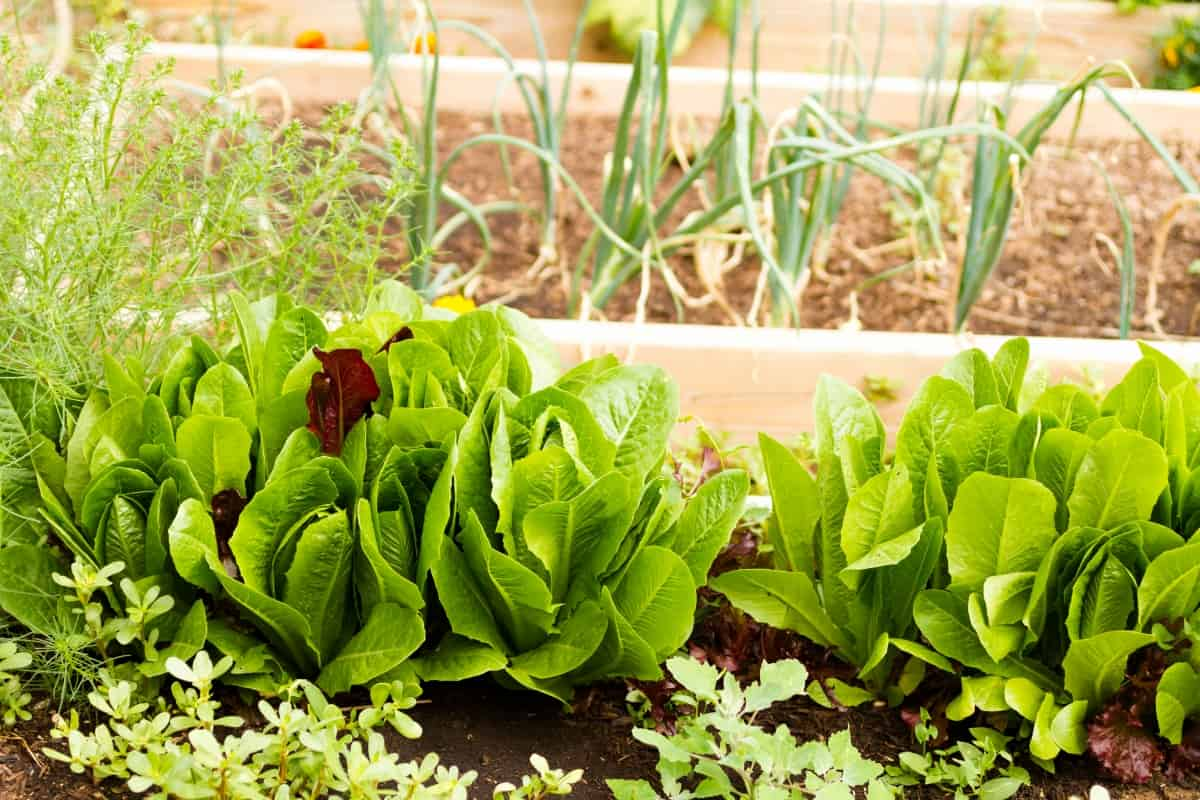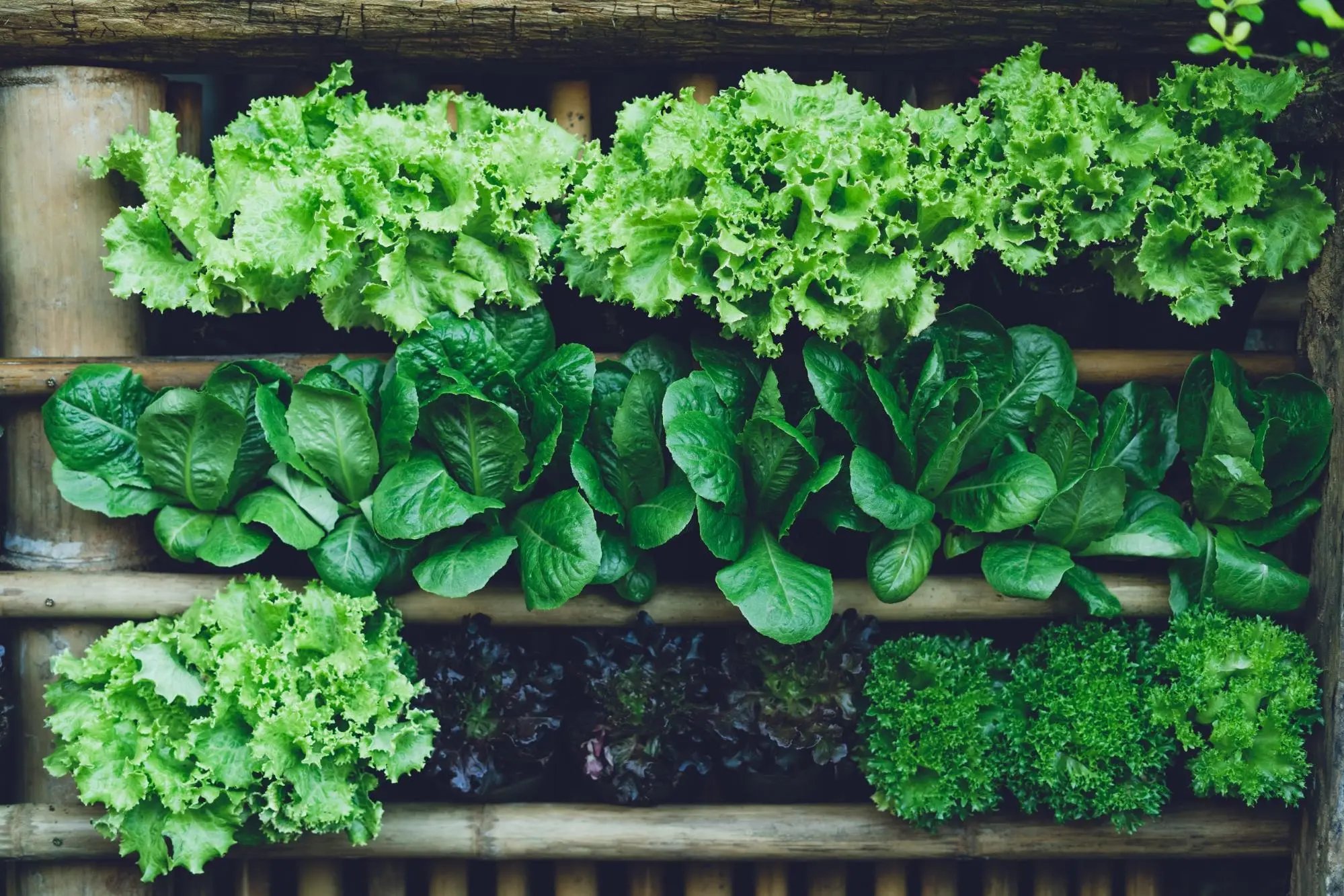Home>Gardening News and Trends>Latest News>How To Grow Vegetables In An Apartment
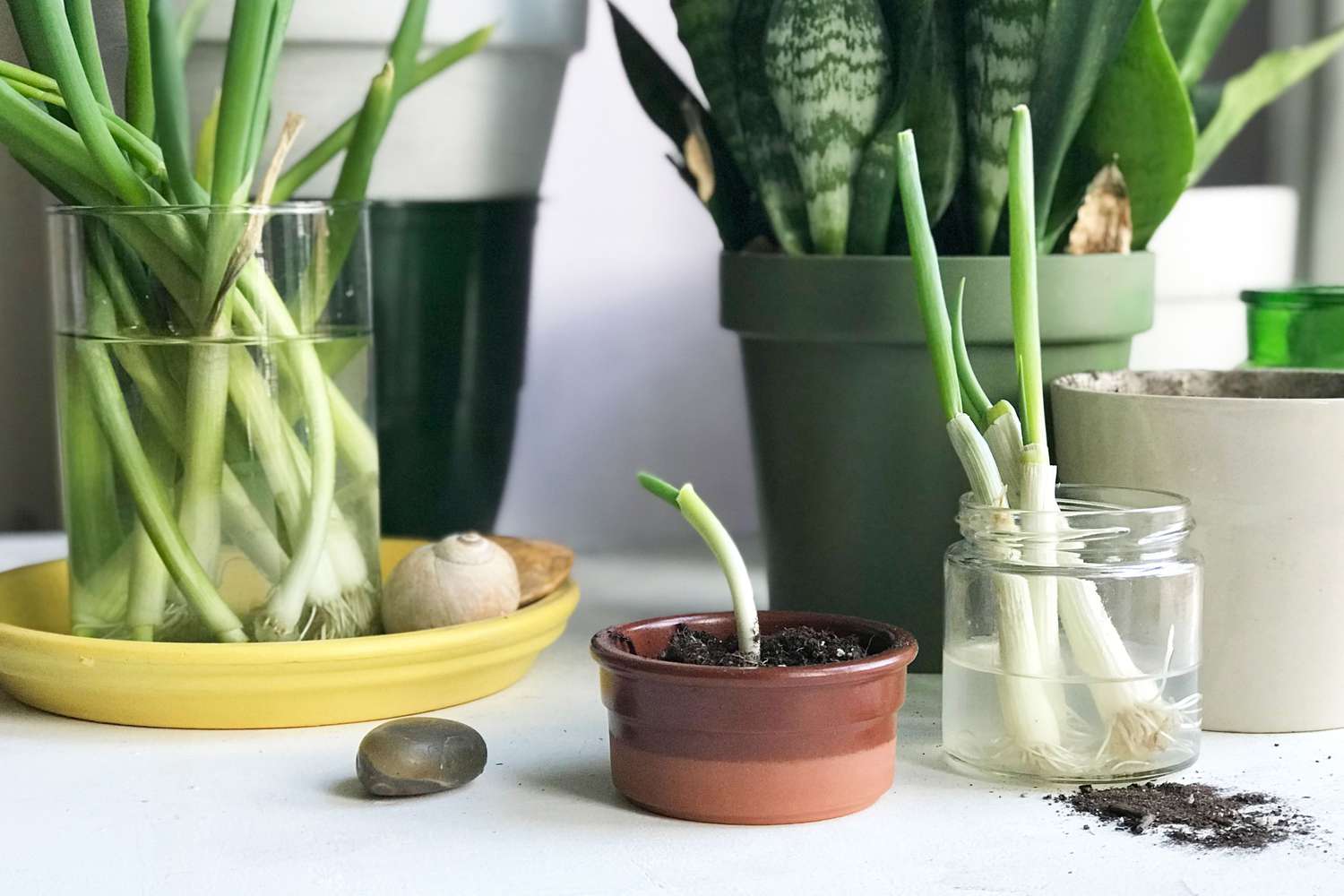

Latest News
How To Grow Vegetables In An Apartment
Modified: February 9, 2024
Learn the latest news on how to grow vegetables in an apartment. Discover tips, techniques, and innovative methods for successful indoor gardening.
(Many of the links in this article redirect to a specific reviewed product. Your purchase of these products through affiliate links helps to generate commission for Chicagolandgardening.com, at no extra cost. Learn more)
Table of Contents
Introduction
With the ever-increasing urbanization and limited space in cities, many people are turning to apartment living. But just because you live in an apartment doesn’t mean you can’t enjoy the benefits of growing your own vegetables. In fact, apartment gardening is becoming increasingly popular, allowing individuals to have fresh, homegrown produce right at their fingertips.
Growing vegetables in an apartment not only provides you with delicious and nutritious food, but it also offers a therapeutic and rewarding experience. Whether you have a sunny balcony, a small patio, or even just a windowsill, there are various ways you can create a thriving vegetable garden in your apartment.
In this article, we will explore the different aspects of growing vegetables in an apartment. We will discuss how to choose the right vegetables, evaluate sunlight and space, select suitable containers, prepare the soil, provide proper care, deal with pests and diseases, and finally, how to harvest and store your vegetables.
By following the tips and guidelines provided, you can transform your apartment into a green oasis and enjoy the fresh taste of homegrown produce all year round. So let’s dive in and discover how you can become a successful apartment gardener!
Choosing the Right Vegetables
When it comes to apartment gardening, choosing the right vegetables is crucial for a successful and bountiful harvest. While you may not have the expansive space that a traditional garden offers, there are still plenty of vegetables that can thrive in a small apartment setting.
First and foremost, consider your personal preferences and what you enjoy eating. This will ensure that you are motivated to care for and harvest your vegetables. Additionally, take into account the time it takes for each vegetable to mature. Some vegetables like radishes and salad greens have a shorter growing cycle and can be harvested in just a few weeks, while others like tomatoes and peppers require a longer growing season.
Next, evaluate the amount of sunlight your apartment receives. Most vegetables require at least 6-8 hours of direct sunlight each day to grow properly. If you have a balcony or patio that gets ample sunlight, you can consider growing sun-loving vegetables such as tomatoes, peppers, cucumbers, and herbs. If your apartment lacks direct sunlight, opt for leafy greens like lettuce, spinach, and kale that can tolerate partial shade.
Furthermore, consider the space available in your apartment. If you have limited space, focus on growing compact or dwarf varieties of vegetables that do not require much room to flourish. Some examples include cherry tomatoes, bush beans, mini bell peppers, and patio cucumbers. Alternatively, you can explore vertical gardening techniques, utilizing trellises or hanging baskets to maximize your growing space.
Lastly, think about the level of maintenance required for each vegetable. Some vegetables are more forgiving and require less attention, making them ideal for beginners or those with busy schedules. Look for vegetables that are disease-resistant and do not require frequent pruning or staking.
By carefully considering your preferences, available sunlight, space constraints, and maintenance capabilities, you can select the right vegetables for your apartment garden. This will set you on the path to a successful and enjoyable growing experience, bringing the joy of fresh, homegrown produce into your apartment.
Evaluating Sunlight and Space
Before diving into apartment gardening, it’s crucial to evaluate the amount of sunlight and space available in your apartment. Sunlight is the life force for plants, and without adequate exposure to sunlight, your vegetable garden may struggle to thrive. Understanding the sunlight conditions in your apartment will help determine the types of vegetables you can successfully grow.
Start by observing the different areas of your apartment throughout the day. Take note of which areas receive direct sunlight and for how long. Ideally, vegetables should receive at least 6-8 hours of direct sunlight daily to ensure proper growth and development. Observe how shadows move throughout the day to identify areas with the most sunlight exposure.
If you have a balcony or patio, consider yourself lucky as these spaces often provide the best sunlight conditions for gardening. However, if your apartment lacks direct sunlight, don’t worry. There are still vegetables that can tolerate and thrive in partial shade conditions.
Leafy greens like lettuce, spinach, and Swiss chard are excellent choices for areas with limited sunlight. They can usually grow with just a few hours of direct sunlight per day. These vegetables also tend to enjoy cooler temperatures, making them suitable for apartments with limited temperature control.
If you have windowsills that receive enough light, you can grow herbs like basil, parsley, and chives. These culinary essentials are known to tolerate lower light levels and can be easily incorporated into your daily cooking.
If you have access to a sunny balcony or patio, you can grow sun-loving vegetables such as tomatoes, peppers, eggplants, and cucumbers. These vegetables require a significant amount of direct sunlight to thrive and produce a bountiful harvest. They also benefit from good air circulation, which is often available in outdoor spaces.
Considering the available space in your apartment is equally important. Measure the size of your balcony, patio, or windowsills and determine how much space you can allocate for your vegetable garden. If you have limited space, focus on growing compact varieties or consider vertical gardening techniques to maximize your growing area.
By evaluating the sunlight and space in your apartment, you can make informed decisions about the types of vegetables to grow. Whether you have a sunny balcony or a partially shaded windowsill, there are plenty of options available to create a thriving apartment garden.
Container Selection
When it comes to apartment gardening, choosing the right containers is essential. Since you don’t have access to traditional garden beds, containers will serve as the home for your vegetable plants. The containers you select should provide the necessary space for root growth, proper drainage, and be suitable for the specific needs of your chosen vegetables.
There are various types of containers to choose from, including plastic pots, ceramic pots, fabric bags, hanging baskets, window boxes, and even repurposed containers like buckets or crates. Each type has its own advantages and considerations, so it’s important to assess your apartment’s specific requirements before making a final decision.
Consider the size of the container based on the mature size of your chosen vegetables. Larger vegetables, such as tomatoes or peppers, may require deeper containers to accommodate their extensive root systems. On the other hand, smaller herbs or lettuces can thrive in shallower pots.
Drainage is another crucial factor to consider in container selection. Ensure that your containers have proper drainage holes to prevent water from pooling at the bottom, which can lead to root rot. If your chosen container doesn’t have drainage holes, you can create them using a drill or by lining the bottom with rocks or gravel.
The material of the container can also impact the health of your plants. Plastic pots are lightweight, affordable, and retain moisture well. However, they may not be as aesthetically pleasing as ceramic pots. Ceramic pots, while more visually appealing, can be heavy and may require additional care to prevent waterlogged soil.
Fabric bags are a popular choice for their excellent drainage and portability. They allow air to reach the roots, preventing them from becoming waterlogged. Hanging baskets and window boxes are great options if you have limited floor space and want to take advantage of vertical gardening.
Lastly, consider the aesthetic aspect of the containers. Apartment gardening is not solely about functionality; it’s about creating an enjoyable and visually appealing space. Choose containers that complement your apartment’s decor and create a welcoming atmosphere.
When choosing containers for your apartment garden, consider the size, drainage, material, and aesthetic appeal. By selecting the right containers, you will provide your vegetables with a suitable home that promotes healthy growth and development.
Soil and Fertilizer
Creating the ideal growing environment for your apartment garden starts with choosing the right soil and providing adequate nutrients through fertilization. While traditional garden soil may not be accessible in an apartment setting, there are alternatives that can foster healthy plant growth.
When selecting soil for your containers, it’s important to choose a high-quality potting mix rather than using soil from your garden or the ground. Potting mixes are specially formulated to provide the necessary nutrients, moisture retention, and proper drainage for container gardening.
Look for potting mixes that are labeled specifically for vegetables or containers. Avoid soil mixes that contain a high percentage of peat moss as it can compact over time and impede drainage. Instead, opt for mixes that incorporate ingredients like coconut coir, perlite, or vermiculite, which facilitate aeration and moisture retention.
If you prefer a more customized approach, you can create your own potting mix by combining equal parts of compost, perlite, and coconut coir. This blend provides a nutrient-rich, well-draining medium for your vegetables to thrive.
In addition to providing a suitable growing medium, fertilizing your apartment garden is important to ensure optimal plant health and productivity. Unlike garden beds that receive natural nutrients from the soil, container plants rely solely on the nutrients you provide.
Choose an organic, slow-release fertilizer specifically formulated for vegetables. These fertilizers release nutrients gradually, providing a steady supply of essential elements to your plants. Follow the instructions on the fertilizer package and apply it according to your vegetable’s growth stage and the recommended frequency.
Another option is to use organic liquid fertilizers, such as fish emulsion or seaweed extract, which can be diluted and applied directly to the soil. These liquid fertilizers are quickly absorbed by the plants, providing an instant nutrient boost.
Remember to fertilize your vegetables sparingly, as over-fertilization can lead to nutrient burn or excessive leaf growth at the expense of fruit production. Regularly monitor the health of your plants and adjust your fertilization routine accordingly.
Overall, by choosing the right potting mix and providing appropriate fertilization, you can create a nutrient-rich environment for your apartment garden. This will promote healthy plant growth, increase yield, and enhance the flavor and quality of your homegrown vegetables.
Watering and Drainage
Proper watering and drainage are essential for the success of your apartment garden. Overwatering or poor drainage can lead to root rot, fungal diseases, and plant stress, while underwatering can result in stunted growth and poor crop yield. Understanding the watering needs of your vegetables and ensuring efficient drainage will help maintain a healthy and thriving garden.
Each vegetable has specific water requirements, so it’s important to research and understand the needs of the plants you are growing. Generally, vegetables prefer consistent moisture levels, with the soil being moist but not waterlogged. Use your finger to check the moisture level by sticking it into the soil up to the second knuckle. If it feels dry at that depth, it’s time to water.
When watering your container plants, do so thoroughly until water begins to drain out of the drainage holes. This ensures that the entire root system receives adequate moisture. Avoid shallow watering, as it can cause the roots to grow near the surface, making the plants more susceptible to drought stress.
Consider the time of day for watering as well. Early morning is the ideal time, as it allows the leaves to dry off quickly, reducing the risk of fungal diseases. Avoid watering during the hottest part of the day, as the water can evaporate before the plants have a chance to absorb it.
Drainage is equally important to prevent water from pooling in the bottom of your containers, which can lead to root rot. Ensure that your containers have proper drainage holes, allowing excess water to escape. Elevate your containers slightly by using pot feet or placing them on a saucer filled with pebbles. This will allow any excess water to flow out and prevent your plants from sitting in a pool of water.
It’s important to strike a balance with watering, as both overwatering and underwatering can have negative effects on your vegetable plants. Monitor the moisture levels regularly, observe the foliage, and adjust your watering routine accordingly.
In addition, if you plan to be away for an extended period, consider using self-watering containers or setting up a drip irrigation system. These automated watering methods can help ensure your plants receive consistent moisture even in your absence.
By understanding the watering needs of your vegetables, providing thorough and appropriate watering, and ensuring effective drainage, you will create a healthy growing environment for your apartment garden. This will result in robust plants, plentiful harvests, and a thriving vegetable garden to enjoy throughout the growing season.
Planting and Transplanting
Planting and transplanting are crucial steps in establishing your apartment garden. Whether you’re starting from seeds or transplanting seedlings, proper techniques and timing will contribute to the success of your vegetable garden.
Before beginning, make sure you have chosen the appropriate container size for each vegetable. Transplants typically require pots that provide enough space for their root systems to grow and develop. If starting from seeds, consider using seed trays or starter pots to germinate your seeds before transplanting them into larger containers.
Start by filling your containers with the selected potting mix, leaving about an inch of space from the top. Moisten the soil before planting to create a conducive environment for germination or transplanting.
If you’re starting from seeds, follow the recommended planting depth and spacing guidelines provided on the seed packaging. Gently press the seeds into the soil, covering them with the appropriate amount of soil. Maintain proper moisture levels to promote germination, ensuring the soil doesn’t dry out or become waterlogged.
Transplants should be carefully removed from their original containers and placed into prepared holes in the new containers. Handle the seedlings by their leaves to prevent damaging the delicate stems. Ensure that the soil level of the transplant matches that of the container and gently firm the soil around the base to provide stability.
Consider the timing of planting or transplanting to maximize your vegetable’s growth potential. Some vegetables, like lettuce and spinach, prefer cooler temperatures and can be started as early as late winter or early spring. Warm-season vegetables such as tomatoes, peppers, and cucumbers should be transplanted after the threat of frost has passed and soil temperatures have warmed up.
Proper spacing is also important to avoid overcrowding and competition for nutrients and sunlight. Refer to the spacing recommendations for each vegetable to ensure adequate airflow and room for growth. Utilize companion planting principles to maximize the use of limited space and to discourage pests through natural means.
After planting or transplanting, provide a light watering to help settle the soil and ensure good root-to-soil contact. Monitor your plants closely in the following days to ensure they are adapting well to their new environment.
By following the appropriate techniques for planting and transplanting, you will give your vegetable plants a solid foundation for growth. Proper spacing, timing, and handling will set the stage for healthy development and ultimately lead to a successful and fruitful apartment garden.
Care and Maintenance
Proper care and maintenance are essential for the health and productivity of your apartment garden. By providing your vegetables with the necessary attention and care, you will ensure that they thrive throughout the growing season and produce a bountiful harvest. Here are some key tips to keep in mind:
Watering: Regular and consistent watering is crucial for the well-being of your plants. Monitor the moisture levels of the soil and adjust your watering schedule based on the specific needs of each vegetable. Avoid overwatering, as it can lead to root rot. Water deeply, but allow the soil to dry slightly before the next watering.
Weeding: Regularly remove any weeds that compete with your vegetables for nutrients and space. Weeds can quickly overtake your container and hinder the growth of your plants. Use a small hand tool or your fingers to carefully remove weeds, taking care not to disturb the roots of your vegetables.
Pruning: Some vegetables, such as tomatoes, benefit from pruning to promote airflow, reduce disease risk, and improve fruit production. Regularly remove suckers or side shoots that emerge from the leaf axils of tomato plants. Consult specific pruning guidelines for the vegetables you are growing to ensure proper pruning techniques.
Support: Certain vegetables, like tomatoes, cucumbers, and peas, may require support to prevent them from sprawling and breaking. Stake or trellis these plants to keep them upright, improve air circulation, and make harvesting easier.
Fertilizing: Monitor your plants for signs of nutrient deficiency and adjust your fertilization routine accordingly. Organic fertilizers can be applied throughout the growing season to replenish nutrients and ensure healthy growth. Follow the recommended application rates and frequency for the specific fertilizers you are using.
Mulching: Applying a layer of organic mulch, such as straw or wood chips, around your plants can help conserve moisture, suppress weed growth, and regulate soil temperature. Mulching also adds organic matter to the soil as it breaks down over time.
Pest and Disease Control: Regularly inspect your plants for signs of pests or diseases. Identify common pests and employ organic pest control methods such as handpicking, using insecticidal soap, or introducing beneficial insects. Proper sanitation and good airflow can help minimize disease incidence.
Harvesting: Harvest your vegetables when they are at their peak of ripeness. Each vegetable has specific indicators of readiness, so refer to gardening resources or specific plant labels for guidance. Harvesting regularly encourages continuous production and prevents overripe or spoiled crops.
By providing proper care and maintenance, you will create an optimal growing environment for your apartment garden. Regular watering, weeding, pruning, and monitoring for pests and diseases will help ensure the health and productivity of your vegetables. With diligent attention, you can enjoy a thriving, vibrant, and fruitful apartment garden.
Pest and Disease Control
Pests and diseases can pose challenges to your apartment garden and threaten the health and productivity of your vegetables. It’s crucial to be proactive in preventing and controlling these issues to ensure the success of your garden. By implementing preventive measures and utilizing organic pest control methods, you can protect your plants and promote a thriving garden ecosystem.
Preventive Measures:
- Start with healthy plants: Select plants from reputable nurseries or start from seeds to reduce the risk of introducing pests or diseases.
- Practice good sanitation: Regularly clean up debris, fallen leaves, and spent plants to eliminate hiding places for pests and potential disease hosts.
- Rotate crops: Avoid planting the same vegetables in the same containers consecutively. Rotating crops helps prevent the buildup of pests and diseases specific to certain plant families.
- Provide proper spacing: Adequate spacing between plants improves air circulation, reducing the likelihood of diseases taking hold.
- Water properly: Avoid overhead watering, as wet foliage can create an environment conducive to fungal diseases. Water at the soil level to keep leaves dry.
Organic Pest Control Methods:
- Handpicking: Inspect your plants regularly and remove pests like caterpillars, beetles, or snails by hand. Drop them into a bucket of soapy water to dispose of them.
- Biological control: Introduce beneficial insects, such as ladybugs or lacewings, which prey on common garden pests. This natural method can help maintain a balance in your garden ecosystem.
- Insecticidal soap: Spray a solution of mild soap and water directly on pest-infested plants to deter and control pests like aphids and spider mites. Be sure to follow the application instructions and avoid using on plants with sensitive foliage.
- Neem oil: Neem oil is an organic pesticide derived from the neem tree. It can be effective against a wide range of pests and has minimal impact on beneficial insects.
- Companion planting: Utilize companion planting techniques by interplanting vegetables with herbs or flowers that naturally repel pests. For example, planting marigolds near tomatoes can help deter nematodes.
Disease Control:
- Monitor for signs of diseases, such as wilting, discoloration, or lesions on leaves or stems. Remove and destroy infected plant parts to prevent the spread of diseases.
- Proper watering and adequate spacing can help minimize the occurrence of fungal diseases, as they thrive in moist and crowded conditions.
- Apply organic fungicides, such as copper-based products, following the manufacturer’s instructions if necessary. These treatments should be used as a last resort if preventive measures have failed.
By implementing these pest and disease control strategies, you can proactively protect your apartment garden from common pests and diseases. A healthy and pest-free garden will result in better plant growth, higher yields, and a more enjoyable gardening experience.
Harvesting and Storage
Harvesting your vegetables at the right time and storing them properly is essential to enjoy the freshness and flavor of your homegrown produce. Knowing when and how to harvest, as well as the best storage practices, will ensure that you get the most out of your apartment garden’s harvest.
Harvesting:
Each vegetable has its own indicators of ripeness and readiness for harvest. Here are some general guidelines:
- Leafy greens: Harvest individual leaves as needed or cut the entire plant at its base. Regular harvesting encourages continuous growth and prevents bitterness.
- Root vegetables: Gently dig around the base of the plant to loosen the soil and lift the vegetable. Remove excess soil, keeping the tops intact for storage.
- Tomatoes: Harvest when the fruits are fully colored and firm but still slightly yielding to the touch. Twist or cut them off the vine, leaving the calyx attached.
- Peppers: Harvest peppers when they have reached their mature color, whether green, red, or another shade. Cut them from the plant using pruning shears or a sharp knife.
- Cucumbers: Harvest cucumbers when they are firm and fully grown but still have a glossy appearance. Cut them from the vine with a few inches of stem attached.
- Herbs: Harvest herbs by snipping individual leaves or stems as needed. Regular pruning encourages bushier growth and more abundant harvests.
Storage:
Proper storage helps maintain the freshness and quality of your harvested vegetables. Consider the following storage practices:
- Leafy greens: Rinse, shake off excess moisture, and store them in airtight containers or plastic bags lined with paper towels. Place them in the refrigerator crisper drawer.
- Root vegetables: Remove excess soil, but do not wash them. Store them in a cool, dark place with good ventilation, such as a root cellar or the refrigerator.
- Tomatoes: Store ripe tomatoes at room temperature, away from direct sunlight. Avoid placing them in the refrigerator, as it can affect their flavor and texture.
- Peppers: Refrigerate unwashed peppers in a paper bag or perforated plastic bag. They should stay fresh for up to two weeks.
- Cucumbers: Store unwashed cucumbers in the refrigerator crisper drawer. Place them in a plastic bag to retain moisture, if desired.
- Herbs: Place freshly harvested herbs in a glass of water, like a bouquet, and keep them in the refrigerator. Alternatively, wrap the stems in a damp paper towel and store them in a plastic bag.
Remember to check stored vegetables regularly and remove any spoiled or overripe ones to prevent the spread of decay. Enjoy the fruits of your labor by incorporating your freshly harvested vegetables into delicious recipes!
Conclusion
Cultivating an apartment garden and growing your own vegetables is a rewarding and fulfilling experience. Despite the space limitations, with careful planning and proper techniques, you can create a thriving vegetable garden right in your own apartment. By considering factors such as sunlight, space, container selection, soil and fertilizer, watering and drainage, planting and transplanting, care and maintenance, pest and disease control, and harvesting and storage, you can embark on a successful gardening journey.
Choose the right vegetables that suit your preferences, evaluate the sunlight and space available in your apartment, and select containers that provide adequate drainage and room for growth. Use high-quality potting mix, provide proper watering and drainage, and ensure your plants receive the necessary care and attention. Implement organic pest and disease control methods and harvest your vegetables at the peak of ripeness.
Remember, apartment gardening is not just about having fresh and nutritious produce at your fingertips, but it also brings a sense of fulfillment, relaxation, and connection with nature. Tending to your vegetable garden can serve as a therapeutic escape from the hustle and bustle of city life.
So, whether you have a sunny balcony, a small patio, or just a windowsill, embrace the opportunity to create a green oasis in your apartment. In return, you will be rewarded with the joy of gardening, the satisfaction of growing your own food, and a closer connection to nature. Start your apartment garden today and enjoy the taste of homegrown vegetables nurtured by your own hands.
